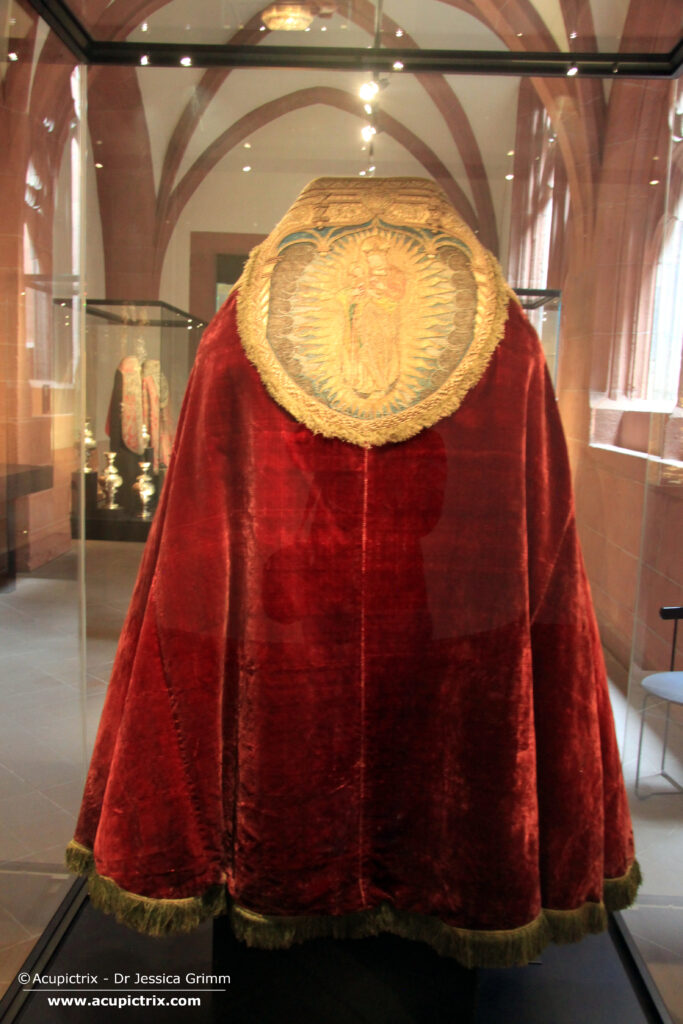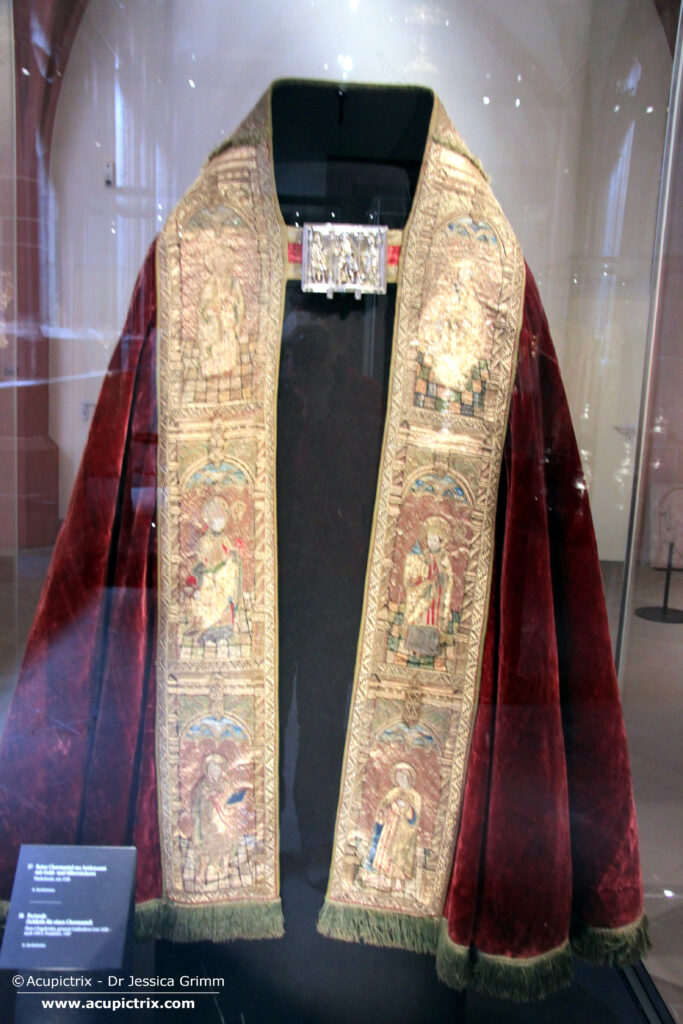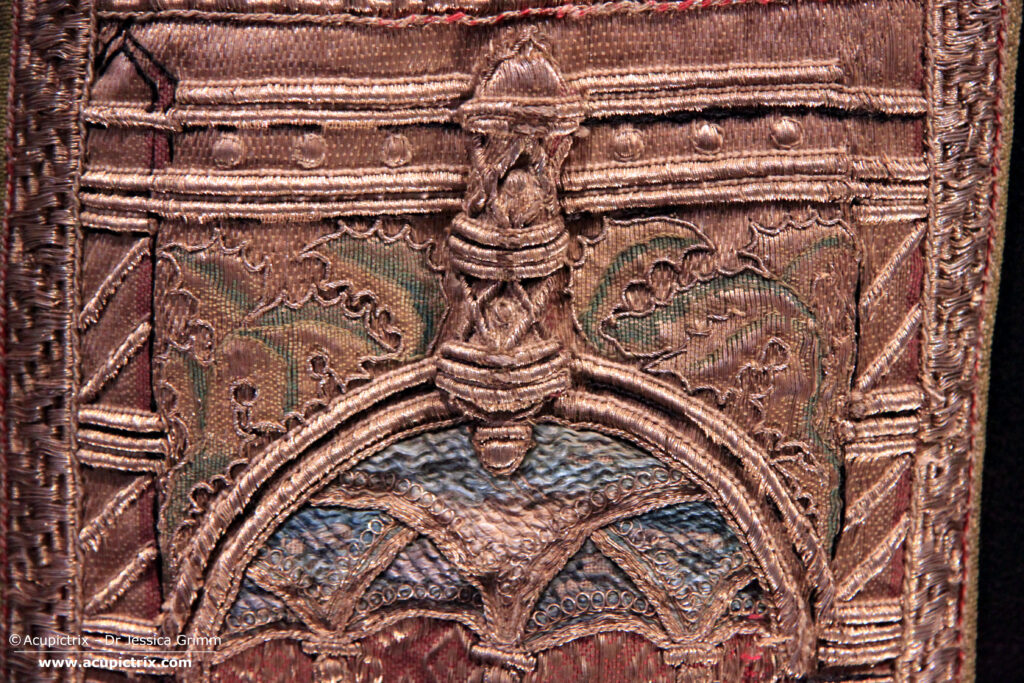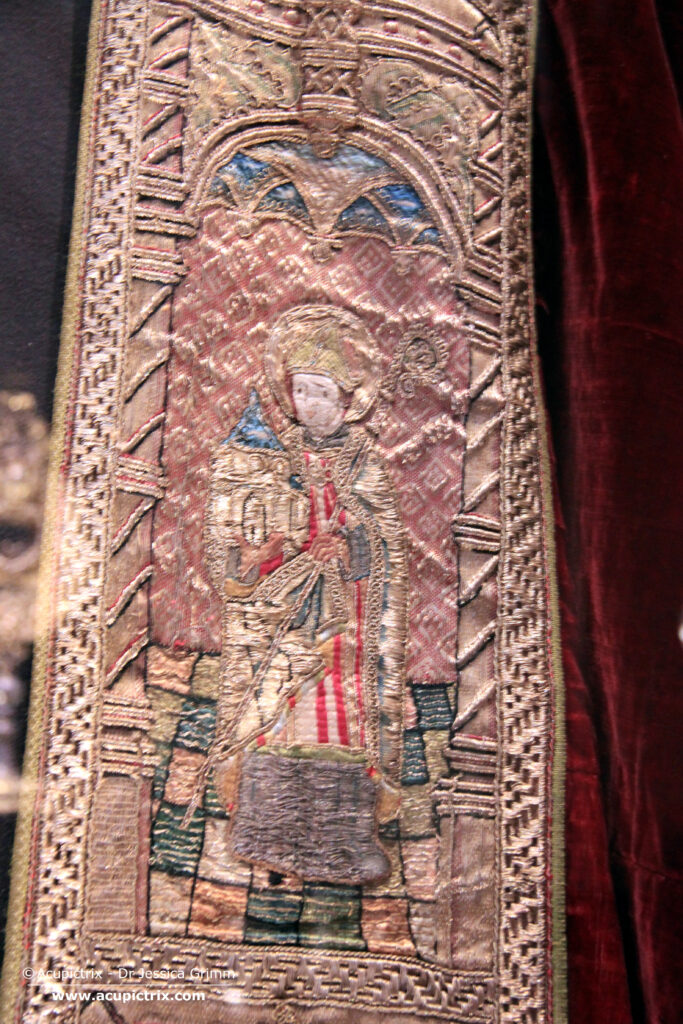This week, we continue our exploration of late medieval goldwork embroidery from the Netherlands. I made an exciting discovery on a cope kept at the Dommmuseum Frankfurt in Germany. The Dutch dalmatics I showed you last week ended up in a museum collection in Italy after they were bought at auction. This week’s Dutch cope ended up in the collection of a 19th-century Catholic priest in Frankfurt. And whilst the dalmatics don’t provide any clues about their original origin, the cope dated to AD 1520 likely does.


Above are pictures of the front and the back of the late medieval goldwork embroidery cope 138 A in the collection of the Dommuseum Frankfurt. We have six orphreys on the front forming three pairs and a hood on the back showing Mary with the child. The figures on the front are interpreted as Saint Peter and Saint Paul, Martin of Tours and Wolfgang of Regensburg, John the Baptist, and Saint John. Sounds good at first glance, except for Wolfgang of Regensburg on a medieval goldwork embroidery. My database contains only one instance. It is a stumpwork embroidery from AD 1598 kept in St. Wolfgang im Salzkammergut, Austria. When our guy is not Wolfgang, who is he? Let’s see if we can find another clue in the embroidery.

A prominent detail of the late medieval goldwork embroidery on the cope hints at where this cope was once worn. Each orphrey displays these lovely holly leaves or hulst as they are called in Dutch. Again, my database contains no other late medieval piece of goldwork embroidery with this detail. However, we have a town in the Netherlands called Hulst after the holly, once common in the area. The holly is in their coat of arms.

Remember the guy who isn’t Wolfgang? He is actually Saint Willibrord. He is hugely popular in the Netherlands as the first bishop of Utrecht and the Apostle of the Frisians. And guess what? The main church of Hulst is the Sint Willibrordus basilica. I therefore think that our late medieval goldwork embroidery cope currently in the Dommuseum Frankfurt was once part of the church treasury of the basilica in Hulst. Isn’t it nice when late medieval embroiderers leave us clues?
Literature
Stolleis, K., 1992. Der Frankfurter Domschatz: Die Paramente: Liturgische Gewänder und Stickereien 14. bis 20. Jahrhundert. Waldemar Kramer, Frankfurt am Main.
